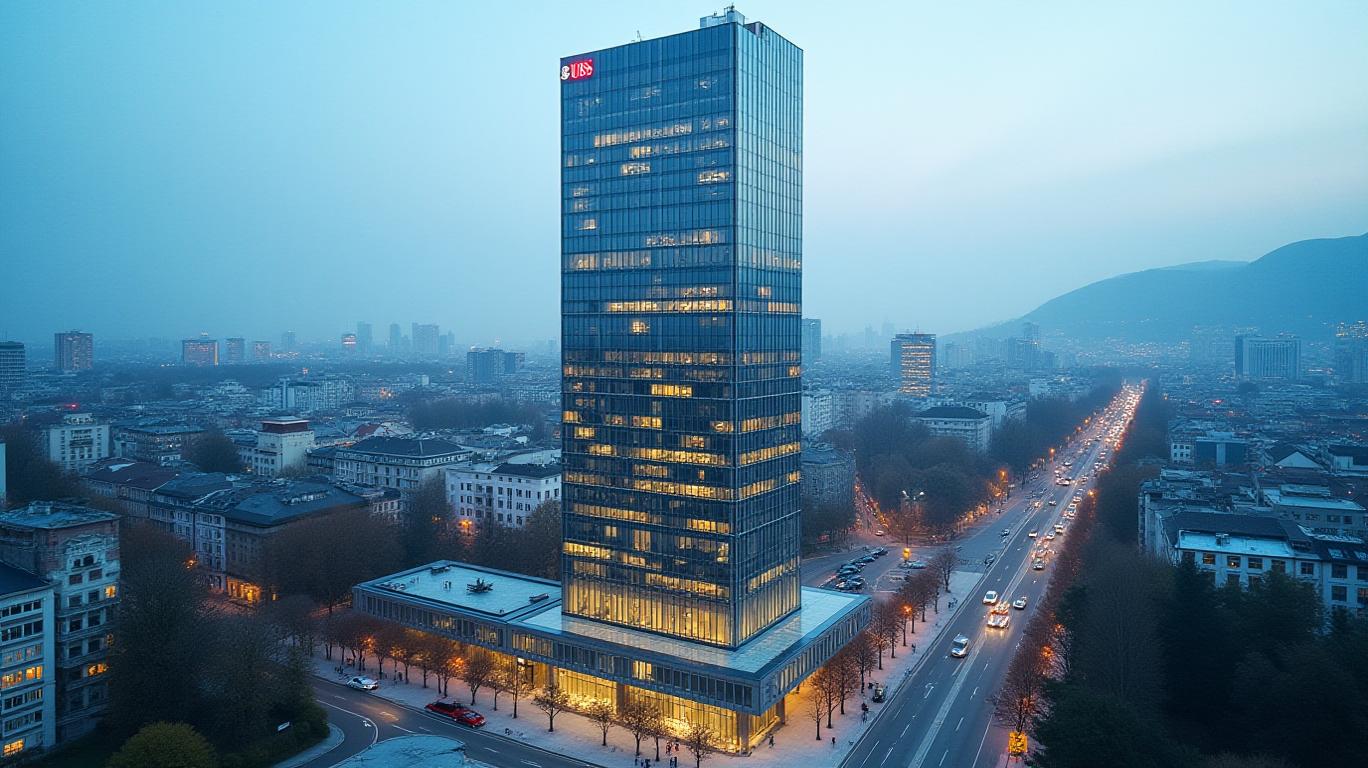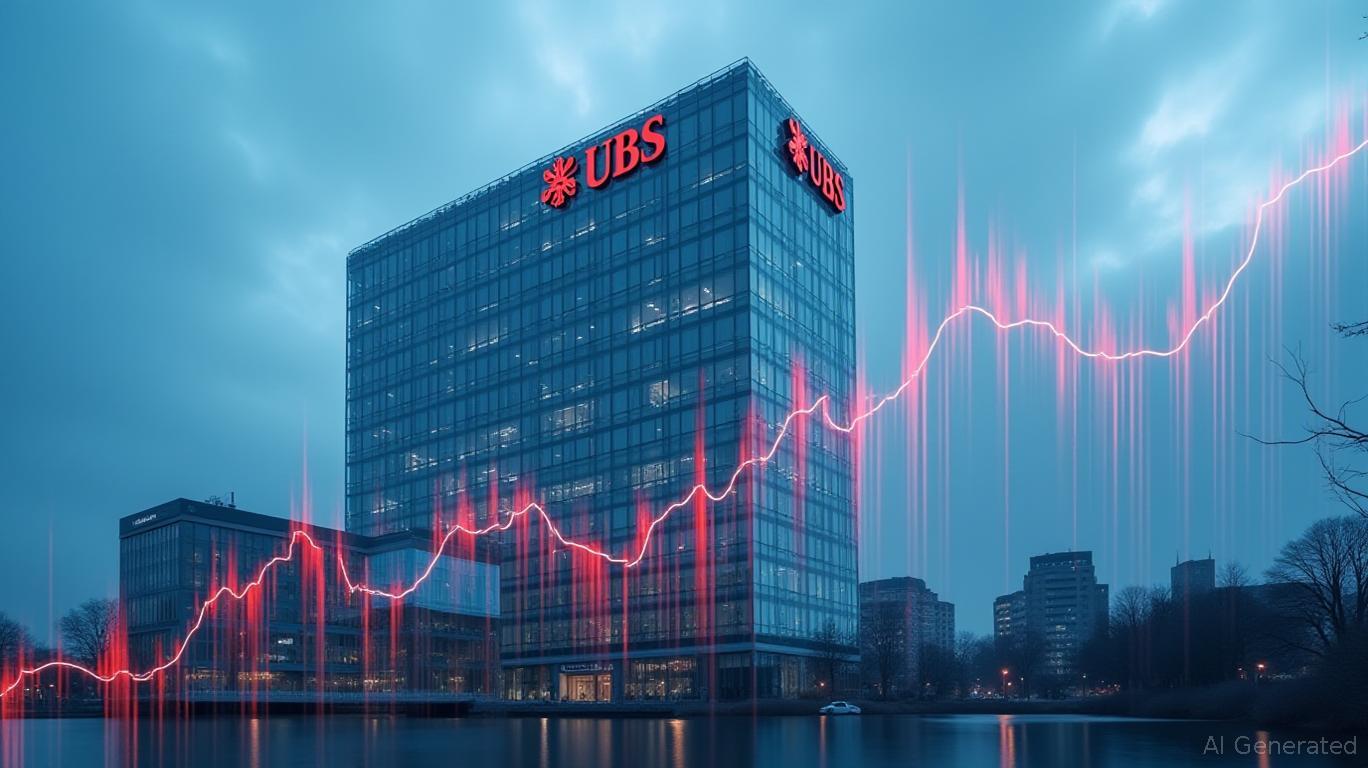UBS Group's Revenue Stagnation: Navigating Crosscurrents in a Volatile Landscape
UBS Group’s Q1 2025 earnings report painted a picture of resilience amid stagnation. While net profit surged to $1.7 billion, exceeding expectations, the failure to reach revenue targets—$12 billion versus forecasts of $12.99 billion—highlighted a persistent struggle to grow the top line. The results underscore a sector-wide challenge: balancing strength in trading and wealth management against headwinds from low interest rates, geopolitical tensions, and regulatory pressures.

The Contradictions in UBS’s Performance
The report revealed contrasting fortunes across divisions. The Investment Banking arm shone, with Global Markets revenue soaring 32% year-on-year, driven by increased client activity in equities and foreign exchange (FX) amid U.S. tariff-related market volatility. This strength was a bright spot, reflecting UBS’s ability to capitalize on institutional demand during uncertain times.
However, the Net Interest Income (NII) dropped sharply, falling 16% year-on-year to $1.629 billion. This decline, exacerbated by Switzerland’s near-zero interest rates (0.25% policy rate) and maturing fixed-term deposits, poses a critical challenge. UBS warned of further NII erosion in Q2, particularly in Swiss franc-denominated portfolios, as low rates persist.
Regional and Strategic Crosscurrents
- Global Wealth Management: Despite adding $32 billion in net new assets (3% annualized growth), NII fell due to lower rates and maturing deposits. Transaction-based income, however, rose 15% as clients sought structured products and alternatives.
- Americas Region: Pretax profits surged over 40%, but UBS flagged material risks from U.S. tariffs, which could impose a 31% Swiss trade duty by July 2025 if unresolved. This uncertainty is clouding investment decisions, with half of UBS’s assets exposed to the region.
- Switzerland/EMEA: Both regions reported stable pretax profit growth (7% year-on-year), supported by robust lending activity (CHF40 billion in loans granted/renewed).
External Pressures and Strategic Responses
The earnings call highlighted two major risks: trade tariffs and regulatory scrutiny. A potential 31% Swiss trade duty would amplify macroeconomic uncertainty, already causing elevated market volatility. Meanwhile, Swiss regulators are considering stricter capital requirements, which UBS argues could weaken its competitiveness. The bank maintains a 14.3% CET1 capital ratio, unchanged from Q4 2024, but must balance this against growth ambitions.
On the cost front, UBS reported $900 million in gross run-rate savings in Q1, bringing cumulative savings to $8.4 billion since 2022. Workforce reductions (20% since 2022) and legacy infrastructure overhauls—such as migrating 95 petabytes of data—are fueling efficiency gains. Integration of Credit Suisse is advancing, with 1 million Swiss clients migrated, and non-core assets targeted to drop below $8 billion by year-end.
Conclusion: A Delicate Balancing Act
UBS’s Q1 results reflect a bank navigating a precarious equilibrium. While its trading and wealth management divisions demonstrate resilience, the NII decline and tariff risks threaten long-term growth. The $1.7 billion net profit and disciplined cost cuts ($8.4B savings since 2022) provide a solid foundation, but external headwinds—particularly the tariff impasse—could derail progress.
The bank’s $2.5 billion share buyback plan, contingent on maintaining a 14% CET1 buffer, hinges on resolving these uncertainties. Investors should closely monitor UBS’s CET1 ratio and NII trends, as well as geopolitical developments. With a targeted 13% cost-income ratio by 2026, UBS aims to sustain profitability, but its ability to do so will depend on external factors as much as internal efficiency.
In a landscape of volatile markets and regulatory shifts, UBS’s strategy of cost discipline and integration progress offers cautious optimism. Yet, without resolution on tariffs and a rebound in interest rates, the path to meaningful revenue growth remains fraught with crosscurrents.










